At San Jose Behavioral Health, we believe education is an important first step in the effort to heal from depression. Understanding the signs, symptoms, and effects of depression can help you get the right type and level of care for yourself or a loved one.
Understanding Depression
Learn About Depression
Sadness is a normal and common emotion that many people experience. Although sadness or the cause of the feeling may be unpleasant, sadness is a healthy emotion. However, depressive disorders differ from sadness in key ways. If feelings of sadness, lethargy, guilt, and similar emotions begin to impact normal daily living for two or more weeks without relief, and they begin to hinder an individual from performing daily tasks, this may indicate the presence of a depressive disorder.
Common symptoms of depression include feelings of emptiness, sadness, irritability, and possible somatic aches and pains. These symptoms must be severe enough to impact daily living. Three types of depressive disorders in adults include (but are not limited to) persistent depressive disorder, major depressive disorder, and premenstrual dysphoric disorder.
Major depressive disorder: Major depressive disorder is characterized by episodes of sadness, lack of energy or motivation, loss of enthusiasm or happiness, sudden changes in weight related to changes in appetite, persistent feelings of hopelessness, changes in sleeping patterns, inability to focus, and/or suicidal tendencies that last for at least two weeks.
Persistent depressive disorder: Formerly known as dysthymia, this disorder is characterized by low-level depression that is very difficult to cope with. This disorder must last at least two years before diagnosis. Symptoms include low energy, low self-esteem, poor concentration, appetite disturbances, and/or feelings of hopelessness. However, the symptoms are usually constant and can last longer, yet are less severe.
Premenstrual dysphoric disorder: This condition also has almost the same symptoms as major depressive disorder. However, this type of depressive disorder is linked to the female menstrual cycle, yet symptoms are more severe than regular premenstrual emotions. Irritability, anxiety, mood swings, dysphoria, and depression before the cycle begins are among the common symptoms.
All depressive disorders greatly affect an individual’s life in a negative manner. Depression is a disorder that will worsen over time without treatment, so many people do not seek help until depression becomes severe.
On the bright side, depressive disorders can be treated through therapy and support. With immediate help, an individual can have the opportunity to live a happier, normal life.
Statistics
Depression Statistics
About 6.7% of U.S. citizens have depression. In the United States, this means that 14.8 million individuals are struggling with this disorder. Based on studies made by the National Institute of Mental Health, depression is often first diagnosed in young adults, ages 18 to 25. An increase of depression cases is seen again at age 50. Women are more likely to develop this condition and seek help for this condition than men. Women are three times more likely to report major depressive disorder to a mental health clinician.
Causes & Risks
Causes and Risk Factors of Depression
Depression can be influenced by a number of risk factors, including the following:
Genetic: Heredity plays a significant role in the development of depression. Studies by the American Psychiatric Association show that individuals with a family history of depressive disorders have 400% greater risk of developing depression than do individuals whose family members have not struggled with depression.
Environmental: Environmental influences and current experiences can trigger a depressive disorder. Traumatic events, stress, and life’s difficulties may trigger this condition. Childhood traumatic experiences such as bullying, abuse, poverty, or family violence can also contribute to depressive disorders. If the environment that surrounds an individual is negative or unsupportive, the risk of depression rises.
Risk Factors:
- Alcoholism and substance use or abuse
- Traumatic experiences
- Women reportedly have higher rates of depression than men
- Young adults ages 18 to 29 have higher risk of depression
- Negative thoughts
- Loss or death of a loved one
- A history of depressive disorders in the family
Signs & Symptoms
Signs and Symptoms of Depression
Like other mental health disorders, depression symptoms can vary from case to case. Personality and history of an individual can determine the symptoms that he or she will show. Common symptoms include the following:
Behavioral symptoms:
- Ignoring regular and leisure activities
- Neglect in school or work responsibilities
- Slowed movement and talking
- Episodes of crying or weeping
- Easily irritated and angered
- Agitated and anxious
Physical symptoms:
- Significant change in weight
- Change in eating habits
- Somatic (body) pains like stomachache or headache
- Excessive sleepiness or fatigue
- Unusual sleeping habits
Cognitive symptoms:
- Slow thought process
- Easily distracted
- Inability to focus or concentrate
- Inability to make decisions
- Thoughts of giving up, running away, or dying
Psychosocial symptoms:
- Irritability
- Sadness, guilt, or shame
- Being withdrawn
- Suicidal tendencies
Lasting Effects
Effects of Depressive Disorders
If an individual with a depressive disorder is not given help, it can lead to dangerous and traumatic consequences such as the following:
- Loss of job and income
- Inability to perform at work or school
- Family and relationship conflicts
- Disturbed sleeping patterns that lead to fatigue
- Being withdrawn and isolated from others
- Dangerous or risky actions
- Substance use and abuse
- Self-inflicted injuries
- Suicidal tendencies
- Suicidal ideation
Co-Occurring Disorders
Co-Occurring Disorders
Depressive disorders may co-occur with the following mental health conditions:
- Anxiety disorder
- Eating disorder
- Obsessive-compulsive disorder (OCD)
- Posttraumatic stress disorder (PTSD)
- Substance use disorder







